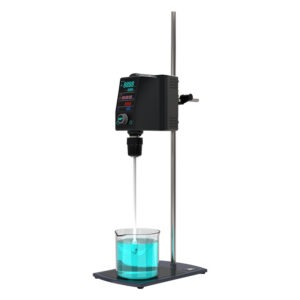
The chemical instrument industry is undergoing rapid innovation, driven by advancements in technology and evolving market demands. These innovations are transforming how laboratories operate, improving efficiency, accuracy, and sustainability. This article explores some of the most significant recent developments in chemical instruments.
1. Smart Instruments and IoT Integration
One of the most notable trends in recent years is the rise of smart instruments equipped with Internet of Things (IoT) capabilities. These instruments allow for real-time data collection and analysis, enabling researchers to monitor experiments remotely. For instance, smart sensors can provide immediate feedback on environmental conditions, such as temperature and humidity, ensuring optimal experimental setups.
IoT integration also facilitates predictive maintenance, where instruments can alert users to potential issues before they result in failures. This capability not only minimizes downtime but also extends the lifespan of laboratory equipment.
2. Advances in Analytical Techniques
Recent innovations have also led to significant advancements in analytical techniques. For example, high-resolution mass spectrometry and nuclear magnetic resonance (NMR) spectroscopy have become more accessible and user-friendly. These technologies allow for more precise chemical analysis and identification, making them invaluable in research and quality control.
Additionally, the development of portable analytical devices has revolutionized field testing. Instruments such as handheld spectrometers enable rapid on-site analysis, which is especially beneficial in industries like environmental monitoring and food safety.
3. Green Chemistry Innovations
As sustainability becomes increasingly important, the chemical instrument industry is responding with innovations focused on green chemistry. New instruments are designed to minimize waste and reduce energy consumption, aligning with global efforts to promote environmentally friendly practices.
For instance, manufacturers are developing solvent-free synthesis techniques and instruments that use renewable energy sources. These innovations not only support environmental goals but also reduce operational costs for laboratories.
4. Enhanced Software Solutions
The integration of advanced software solutions with chemical instruments is another key innovation. Modern instruments come equipped with user-friendly software that simplifies data analysis and reporting. Features such as cloud connectivity allow researchers to access data remotely and collaborate more efficiently.
Moreover, machine learning algorithms are being applied to chemical data analysis, enabling more accurate predictions and insights. This integration of software and hardware is transforming how researchers interpret complex datasets.
5. Customization and Modular Systems
The demand for customization in chemical instruments is rising, leading to the development of modular systems. These systems allow laboratories to tailor instruments to their specific needs, enhancing flexibility and usability.
For example, modular chromatography systems enable users to configure their setups based on the type of analysis required. This adaptability not only improves efficiency but also reduces the costs associated with acquiring multiple specialized instruments.
Conclusion
The chemical instrument industry is at the forefront of innovation, with advancements in smart technology, analytical techniques, green chemistry, software solutions, and customizable systems. These innovations are shaping the future of laboratories, enabling more efficient and sustainable practices. As the industry continues to evolve, staying informed about these trends will be essential for businesses and researchers alike.

